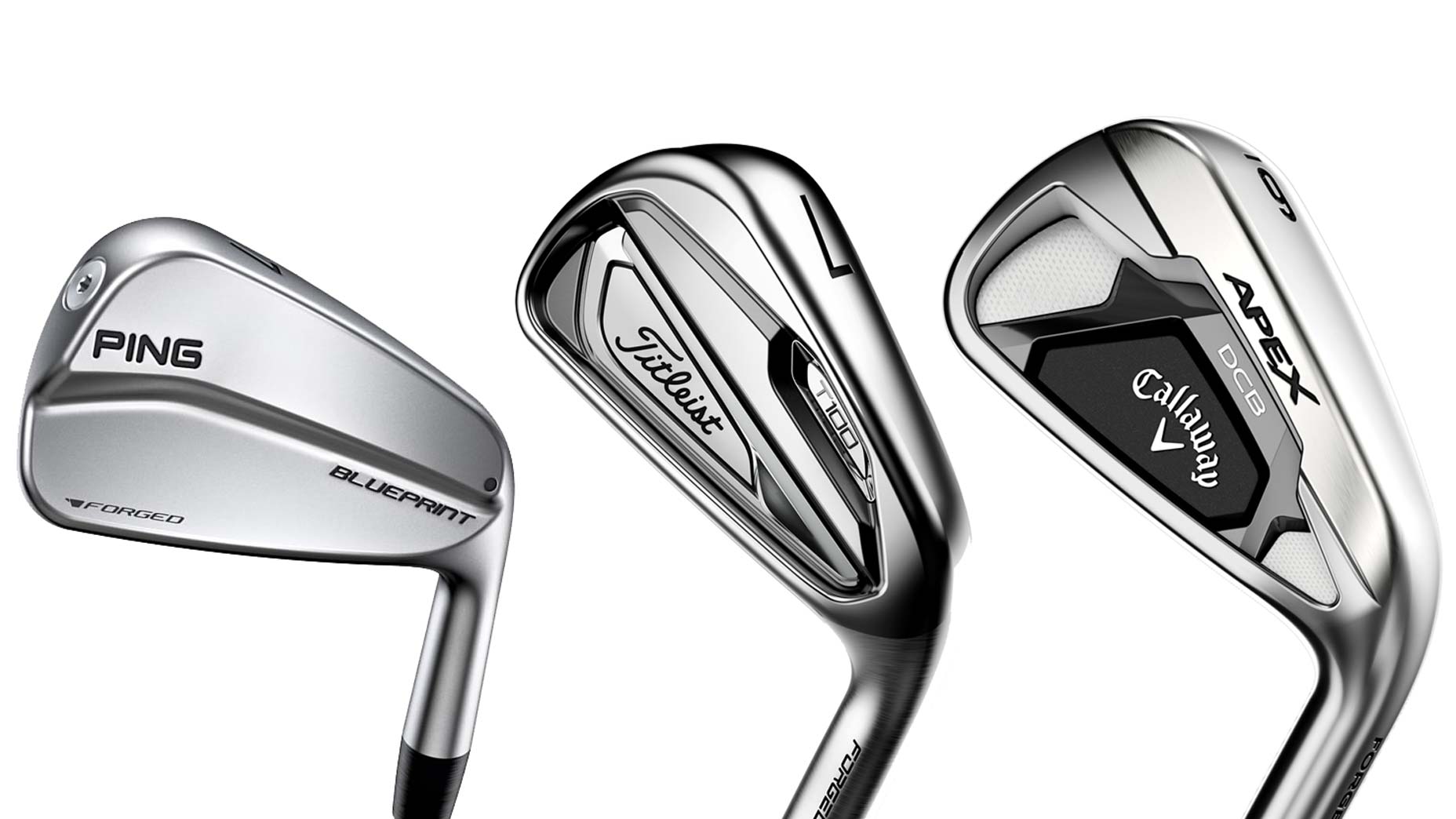The best of both worlds? That’s not nearly enough for us hyper-personalized folks nowadays. We want the best of every world. When it comes to, say, Chinese food, that’s easy—you get the pu-pu platter or, for you fine-dining types, the chef ‘s special tasting menu. When it comes to cars, it’s a little bit tougher, at least until a Transformer-like sports car/luxury sedan/SUV arrives.
For golfers, professional and amateur, that have-it-all future can be now, thanks to the trend toward combination iron sets. To follow the automotive metaphor, it used to be you got 3-PW of the sports car (blade or muscle-back irons; hyper-demanding but super-sexy) or the luxury sedan (cavity-back irons; splitting the difference, Solomon-like, between forgiveness and feel/workability) or the SUV (tech-heavy game-improvement irons; giving you maximum help, if often as sexy as, well, an SUV). Period, full stop.
Today, clubmakers are offering the chance to turn your golf bag into a multi-car garage, with sets composed of most any and all iron models a brand has, each playing to its greatest strengths. Manufacturers are quick to note that these combo sets are meant to be the exception to the rule (even if most golfers think they themselves are the exception that proves the rule).
That’s why, other than a handful of brands like Callaway with its Apex models and Srixon with its ZX models, these sets are generally only available as a custom order via a clubfitting (something you should do regardless).
“Combo sets are still a niche play,” said Michael Vrska, Callaway’s director of fitting and player performance. “For most golfers, having one set of all the same clubs is the best setup.”
Quickly, though, let’s throw it in reverse. Yes, gearheads, we know: Combination iron sets weren’t invented yesterday, so you know. It’s just that previous attempts, sometimes dubbed “mixed sets,” were akin to a Chevy El Camino or a Subaru Brat—rudimentary efforts that slapped together two different things, creating one thing that kinda sorta worked. Seamless integration? Not so much, unless Frankenstein is your platonic ideal.
To see how far things have come in recent times, consider what Callaway is up to in the custom-combo space.
This year, the company went from one combination offering, the Mixed (made up of Apex 21 in the 3-7 irons and Apex Pro in the 8-AW), to four, adding the Player (Apex Pro 3-7, Apex MB 8-AW), the Sweet Spot (Apex DCB 4-5, Apex 21 6-AW) and the Triple Play (Apex DCB 4-5, Apex 21 6-9, Apex Pro PW-AW). As if that weren’t enough, customers can devise their own combination set using any of the Callaway Apex iron models—but those who do so likely don’t grasp the difficulty in creating a unit that performs harmoniously.
Look, for example, at the fact that those prefabricated sets switch models at different points. The issue of which model does what best (and when) is just one of a myriad of questions that have to be resolved to create something that’s entirely coherent. There is also, critically, loft gapping. Differing offset, bounce, spin rates, launch angles, land angles, leading edge, sole width, face hotness. Taper-tip versus parallel-tip shafts. The different way different clubheads are built. The list goes on; the attendant attention to detail required, meticulous.
“It’s not, ‘Let’s grab a couple of clubs out of this box and a couple out of that box and, hey, good luck everybody,'” said Vrska.
Quite the contrary. Callaway looked at reams of data old and new, from analog to AI, and spoke to its network of clubfitters to help create “plug-and-play” combination sets. The average golfer likely would be quite surprised to learn that, say, an Apex Pro 21 8-iron from its own set and one from a combination set aren’t exactly the same—separate, custom tooling is used to create the different heads so that they work holistically with their ultimate set companions. That means tweaked lofts without changing critical playability factors, like the bounce or offset.
Players who ultimately choose to go with a combination set will be in the company of more and more Tour pros, like Callaway’s Phil Mickelson and Dylan Frittelli. That’s also true of companies such as Ping and Titleist that don’t offer stock combination sets at retail but happily (and increasingly) provide them via custom-fitting orders.
Ping’s Cameron Champ splits between a 4-iron i-Blade and a 5-9 Blueprint, while Viktor Perez is 3-5 in the i-Blade and 6-9 in the Blueprint; MacKenzie Hughes divvies his set between two other models, the i210 (4-6) and the S55 (7-9). Different strokes, and sticks, for different folks.
Davis Riley (Titleist T100 4-iron, 620 CB 5-6 iron, 620 MB 7-9 iron), a two-time winner on this season’s Korn Ferry Tour, almost assuredly will be on the PGA Tour next season, where he would join fellow Titleist staffers and combo-set denizens Bernd Wiesberger (T-100 3-iron, 620 CB 4-6, 620 MB 7-9) and Ben An (U500 3-iron, 716 T-MB 4-5, 620 MB 6-9).
“I’ve been doing the combination set for four or five seasons in a row now,” said Riley. “I’ve always been a blade-iron guy in the shorter sticks because I love the workability inherent in a muscle-back. I break to the CBs in the 5-iron and 6-iron because everybody could use a little help in the longer irons—it’s nice to have a little forgiveness there, even for a professional. And then the T100 4-iron, which is bent to a 3-iron, is more of a comfort thing for me. I just have confidence that I can bullet it down the fairway in case my driver
or fairways start going a little sideways on me off the tee.”
In golf, anyway, that Lamborghini-Lexus-Land Rover is here for those who want it.
